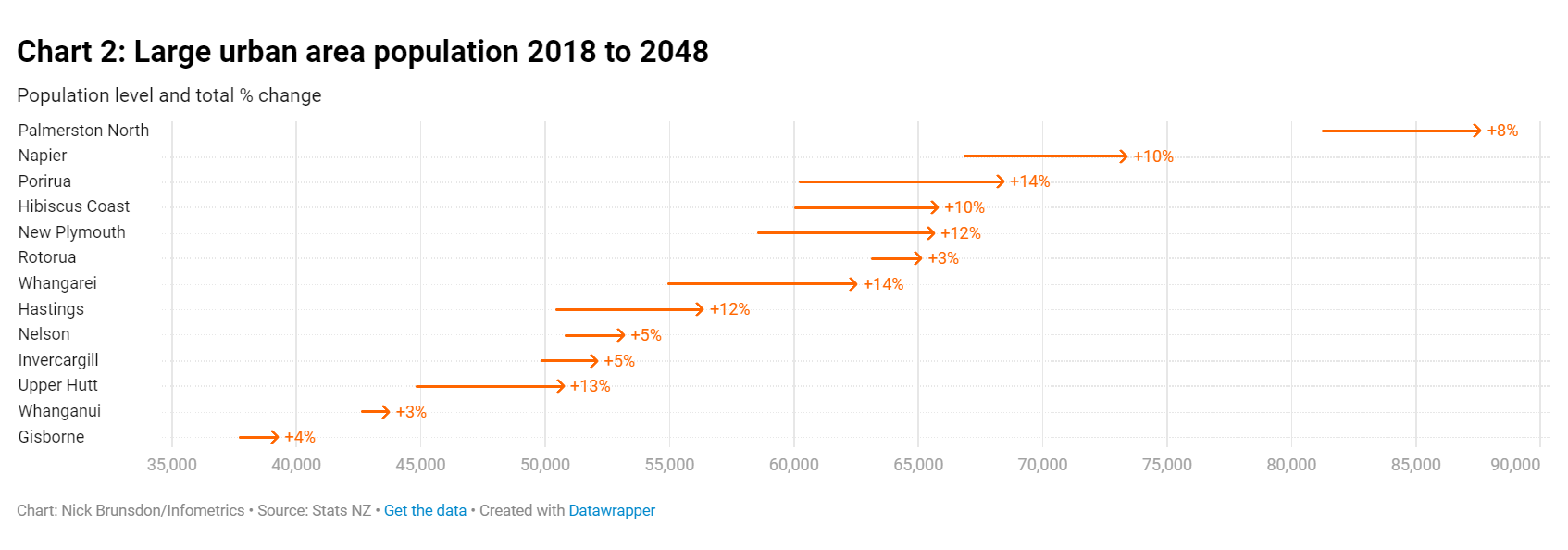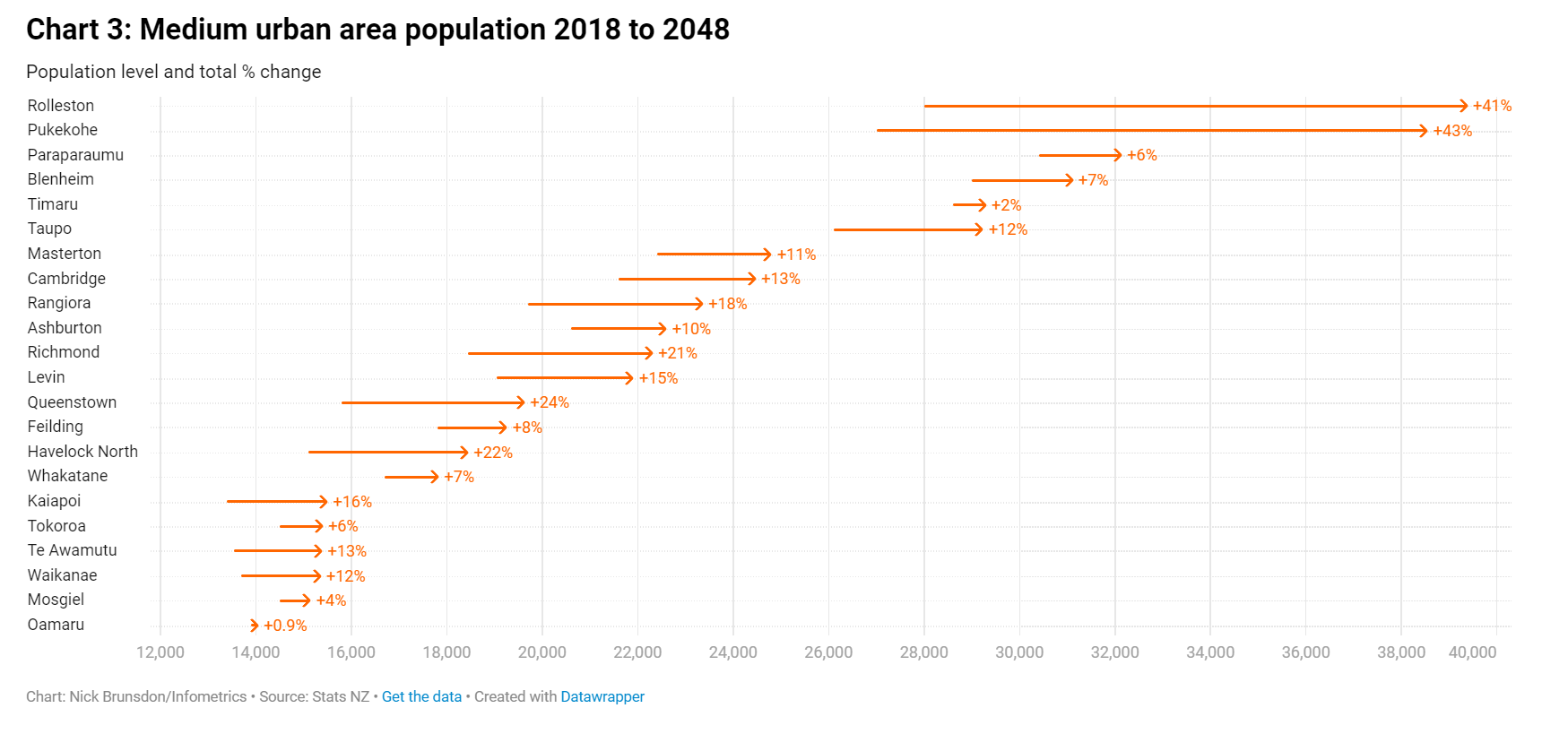This is based on an analysis of Stats NZ data

Nearly all New Zealand towns and cities are expected to see population growth over the next few decades, but the pace of that growth varies, according to Infometrics’ analysis of Stats NZ data.
“We’ve built this analysis using Stats NZ’s urban-rural area classification, which groups New Zealand into areas which share common urban or rural characteristics,” said Nick Brunsdon (pictured above), Infometrics senior economist.
“In practical terms, these areas in focus are cities and larger towns. However, urban-rural areas are not the same as territorial authority (local council) boundaries, even if they share the same name. Most territorial authorities include a mix of urban and rural land, and some include multiple distinct urban areas.”
In an article published in Infometric’s September 2023 newsletter, Brunsdon noted that the population of the nation’s cities and towns are constantly changing in response to shifting age structures, fluctuations in net migration, the economic prospects of key industries, and intangible attractiveness.
But while these changes are often small in any individual year, “but over decades, towns can overtake other towns, some towns might become cities, and sometimes even cities overtake other cities,” he said.
Across the seven major urban regions, population growth was fairly widespread, except in Dunedin, which was projected to grow a total of 6% between 2018 and 2048, lagging the other major urban regions with a growth of between 10% and 34%.

Auckland urban area will continue to be in a league of its own, with its projected growth of 21% adding 297,100 people by 2048 – that, Brunsdon said is “equivalent to adding a combined Hamilton and Lower Hutt.”
Christchurch is expected to remain the second largest major urban area.
“But the bronze medal seems likely to shift,” Brunsdon said, with Hamilton likely to overtake Wellington as New Zealand’s third largest major urban area.
“Wellington’s projected growth of 11% by 2048 translates to a solid 23,900 gain in population, but this increase will still see it knocked off the perch and out of medal contention,” he said. “Hamilton is set to steal the bronze crown, with the area projected to grow 34%, adding 60,600 residents, and moving into third place in 2048.”
Focusing on large urban areas, Rotorua, Nelson, and Invercargill leapfrogged in rankings.
The Rotorua urban area (including Ngongotaha) is projected to modestly grow by 3%, which would see it overtaken by the urban area of Porirua, growing 14% and Hibiscus Coast in northern Auckland, growing 10%. Hastings is projected to strongly grow by 12%, which would see it overtake Nelson (5%).

The Infometrics analysis revealed some bigger shifts among the medium urban areas, with the most notable shifts in Pukekohe (growing 43%) and Rolleston (41%), which both overtake Blenheim (7%), Paraparaumu (6%), and Timaru (2%) in the rankings.

Read the full article, "Where is New Zealand's next top town?"
Get the hottest and freshest mortgage news delivered right into your inbox. Subscribe now to our FREE daily newsletter.



